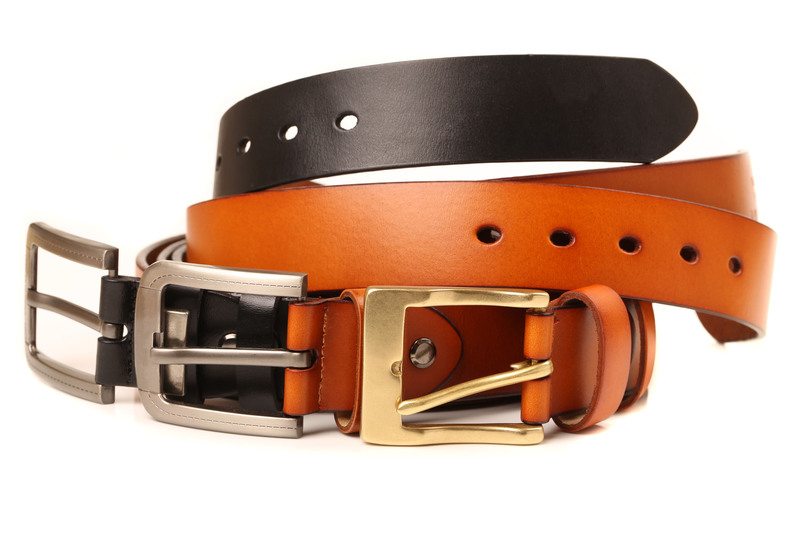Simplifying the Process of Moving Your Bed and Mattress
Posted on 12/06/2025
Simplifying the Process of Moving Your Bed and Mattress
Are you preparing for a move and feeling overwhelmed by the thought of moving your bed and mattress? You're not alone! Beds and mattresses are some of the bulkiest and most important items in any home, making them challenging to transport. However, with the right techniques, tools, and planning, moving your mattress and bed frame can be a straightforward and stress-free process. In this comprehensive guide, we'll walk you step-by-step through how to move your bed and mattress with ease, ensuring both safety and convenience.
Why Moving Your Bed and Mattress Requires Special Attention
Your bed is not just another piece of furniture. It's where you recharge after a long day and plays a critical role in your comfort and well-being. Unfortunately, beds and mattresses are notoriously awkward to maneuver and susceptible to damage if not handled properly. Here's why you need to prioritize safe and effective bed and mattress moving strategies:
- Bulky Size: Mattresses and bed frames can be heavy, large, and difficult to grip.
- Damage Prevention: Improper handling may damage your mattress, frame, or the walls and floors of your home.
- Cleanliness: Mattresses easily attract dust, debris, and stains during moves if not protected.
- Back Injury Risk: Lifting without the right technique may cause strain or injury.
Given these risks, simplifying the process of moving a bed and mattress is essential for an efficient and injury-free move.

Planning Ahead: The Key to a Hassle-Free Bed and Mattress Move
Any successful move starts with careful preparation. Before lifting a finger, take some time to plan each stage of moving your bed and mattress:
1. Take Measurements
Avoid awkward maneuvering and surprises by measuring your mattress, bed frame, and the spaces (doorways, hallways, and staircases) you'll be navigating through. Don't forget to account for sharp corners or tight turns!
2. Gather Your Supplies
Some tools and materials will make the job much easier:
- Mattress bag or shrink wrap for protection (essential for preventing dirt and moisture).
- Moving blankets or bubble wrap to cushion bed frame parts.
- Furniture sliders or dollies for heavy bed bases.
- Ratchet straps or rope to secure items in the moving vehicle.
- Screwdriver or wrench to disassemble the bed frame.
- Labels and bags for hardware and bolts.
- Gloves for better grip and safety.
3. Clean and Prepare Your Mattress and Bed Frame
Take this opportunity to clean your mattress and frame parts before the move. Vacuum the mattress and wipe down the frame, ensuring you're not transporting dust or allergens to your new home.
Step-by-Step Guide: How to Move Your Bed and Mattress Safely
Step 1: Strip the Bed
Remove all linens, pillows, and accessories. Wash or pack them separately to keep everything fresh and organized.
Step 2: Disassemble the Bed Frame
- Refer to your bed frame's manual if available, or take photos as you dismantle it for easier reassembly.
- Carefully remove slats, headboard, footboard, and side rails.
- Place all screws, bolts, and small parts in labeled plastic bags. Tape them to the relevant frame piece or keep them together in one easy-to-find location.
- Wrap wooden or metal pieces with moving blankets or bubble wrap to prevent dings and scratches.
Step 3: Protect and Pack Your Mattress
- Use a mattress bag - This simple investment shields against dirt, dust, and moisture. Most mattress bags are inexpensive and available at moving supply stores.
- If you don't have a mattress bag, use heavy-duty plastic wrap or sheets for temporary protection.
- For long-distance moves or storage, double-bag your mattress or use an extra layer of bubble wrap for added protection.
Tip: Never bend or fold innerspring or memory foam mattresses--doing so may damage the materials and void warranties.
Step 4: Maneuvering Out of the Room
- Work with a partner to navigate hallways and corners.
- If you must move the mattress yourself, use mattress carrying straps to distribute weight evenly and protect your back.
- Keep the mattress upright for easier movement--this also reduces the risk of dragging and scraping along the ground.
- If your building has an elevator, use it! For stairs, plan your path ahead of time and move slowly to maintain control.
Step 5: Loading onto the Moving Truck
- Place the mattress on its side against the wall of the truck. Secure it with straps to prevent shifting.
- Lay flat if you have enough space and no other heavy furniture will be stacked on top of it.
- Stack lighter bedding or pillows on top of the mattress to maximize space and maintain protection.
- For the bed frame components, stack securely and cushion with wrapped blankets.
Expert Tips for Simplifying Mattress and Bed Moving
To make the process of moving a mattress and bed frame even easier, consider these professional tips:
- Label Everything: Mark each frame part and hardware bag to simplify reassembly at your new home.
- Take Photos: Snap pictures during disassembly to serve as a reference guide later.
- Enlist Help: Beds are heavy! Enlist family, friends, or professional movers for maximum safety and efficiency.
- Use Furniture Dollies: For large, heavy bases or adjustable beds, a dolly or hand truck can save time and prevent injury.
- Protect Your Walls and Floors: Lay down towels or cardboard at pinch-points to prevent scuffing.
- Keep Hardware Together: Losing a bolt or screw can halt your progress. Keep them all in one clearly marked container.
Should You Move Your Mattress and Bed Yourself or Hire Movers?
One of the biggest decisions when moving is whether to move your bed and mattress yourself or trust the job to professional movers. Consider the following:
- DIY Moving: Budget-friendly, but requires physical strength, planning, and proper tools. Ideal for local moves or if you have helpers.
- Professional Movers: They bring expertise, manpower, and the right equipment. Perfect for bulky, heavy, or expensive beds (such as platform, adjustable, or luxury mattresses), or for long-distance moves where protection is paramount.
Either way, understanding the best practices for bed and mattress moving ensures your valuable sleep setup arrives in perfect condition.
How to Move Specialty or Large Beds and Mattresses
Moving king-size, California king, or specialty beds (like Murphy beds or adjustable bases) often requires extra planning and care. Here's what to keep in mind:
- King and California King Mattresses: These oversized mattresses may not fit through standard doorways or down tight stairs. Measure twice, and consider splitting a split-king into separate pieces for easier handling.
- Adjustable Bed Frames: Disconnect power supplies and control units, and wrap electrical components with care.
- Murphy Beds: Because of their weight and mechanical parts, it's best to hire professionals for safe removal and reinstallation.
When in doubt, consult moving experts to avoid damage and potential injury.

FAQs on Simplifying the Process of Moving Your Bed and Mattress
How can I prevent my mattress from getting dirty during a move?
Always use a mattress bag or plastic wrap. These inexpensive covers provide an effective barrier against dirt, dust, and moisture. Double layer for added protection, especially during long moves or if rain is forecasted.
Is it possible to move a mattress without a truck?
For local moves, some people strap mattresses to car roofs, but this is dangerous and may damage both the mattress and the vehicle. If you lack a moving van, consider renting one for the day or hiring a professional delivery service for safety and security.
Should I fold or bend my mattress for transport?
No. Most mattresses, especially memory foam or innerspring types, should never be bent or folded as it can cause irreversible damage and void warranties. Only certain latex mattresses and "bed-in-a-box" styles are designed for temporary compression.
How do I reassemble my bed frame after moving?
Refer to the manual or the photos you took during disassembly. Start by identifying each part, securing the headboard and footboard, then inserting rails and slats. Always use the original hardware for the best fit and stability.
What if my new home's doorways are too small for my mattress?
If your mattress won't fit, check for alternate entrance routes, such as larger patio doors or windows (some moving companies offer furniture hoisting services for this purpose). Never force or bend the mattress through a space too small, as you risk permanent damage.
Conclusion: Making Bed and Mattress Moving Easy and Efficient
Simplifying the process of moving your bed and mattress boils down to advance planning, using the right protective supplies, and employing safe lifting strategies. Whether you're moving across town or the country, following these detailed bed and mattress moving tips will help keep your sleep sanctuary intact and ensure a smooth transition to your new home.
Ready to move your bed and mattress the smart way? Gather your supplies, enlist some help, and approach the project with a clear plan. With these expert strategies, your bed will arrive safe, sound, and ready for a restful night's sleep in your new home.
For more moving tips and detailed guides, stay tuned to our blog.

 Guide price for the hire of a Transit Van /up to 300 cu ft/.
Guide price for the hire of a Transit Van /up to 300 cu ft/.